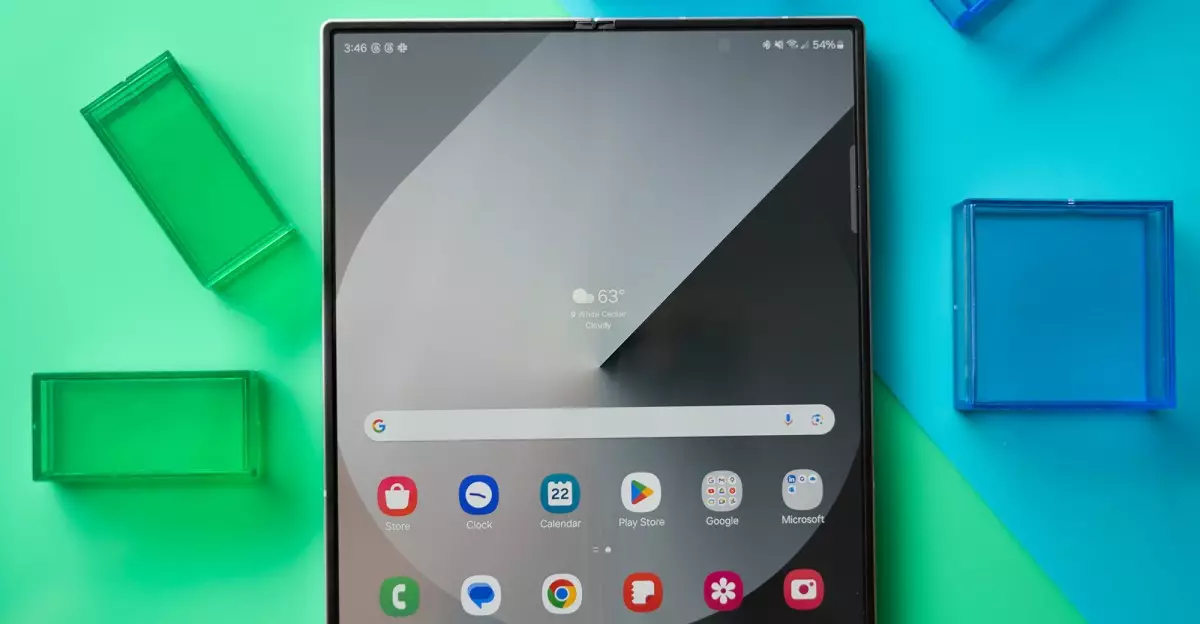In recent years, Samsung has been a trailblazer in the foldable smartphone realm, yet the market’s full potential remains largely untapped. This year, the Korean tech giant appears poised to redefine its approach and elevate the foldable experience, a move driven by both ambition and necessity. The company’s upcoming lineup hints at a strategic shift—focusing on innovation, durability, and accessibility—all aimed at transforming foldables from niche curiosities into essential tools for a broader audience. But is this bold reimagining enough to break through the entrenched skepticism and convert curiosity into consistent sales?
Rather than resting on its laurels with incremental updates, Samsung is apparently launching a more compelling lineup that features a flagship Ultra model, possibly with a slim profile and advanced fabrication techniques. Such a device might boast cutting-edge features like a larger, more immersive front display, echoing the design philosophies of rivals like Oppo and Honor but with Samsung’s signature flair. This isn’t just about adding more features; it’s an attempt to mitigate the tradeoffs—such as fragility and high cost—that have hindered foldables’ mainstream appeal. If Samsung can deliver a foldable line that feels as sturdy and seamless as traditional flagships, it can begin erasing the lingering doubts consumers have about durability and value.
Breaking Down the Persistent Challenges
Despite the excitement around foldables, the reality remains sobering: they constitute a tiny slice of the smartphone market. According to recent estimates, foldables account for merely 1.5 percent of global smartphone sales. Samsung, as the forerunner, has invested heavily to foster interest, yet sales figures tell a different story. Year after year, the foldable segment struggles with limited consumer adoption, ultimately hindered by factors like price, durability, and perceived utility.
Part of the problem lies in the initial perceptions of fragility. Foldable phones are inherently more vulnerable to damage from dust, dirt, or accidental drops—risks that are compounded by their complex hinge mechanisms and delicate flexible screens. Although Samsung aspires to offer full dustproofing via IP68 ratings, actual implementations have lagged behind, leaving consumers cautious. The premium price tag further acts as a barrier. When an expensive device risks longevity or repair costs, many consumers prefer proven, reliable slab phones that don’t require compromise.
Furthermore, some critics argue that Samsung’s incremental updates—such as slight modifications to hinge design or software features—fail to generate enough excitement. The Fold 6 and Z Flip 6, for instance, offered minor improvements that didn’t significantly shift user perceptions or boost sales. Consumers remain hesitant to invest in foldables if they believe the innovation isn’t meaningful enough or if the devices do not deliver on their promises of durability and convenience.
Strategic Innovations as Market Catalysts
The impending release of an Ultra foldable model might serve as a pivotal moment for Samsung. Equipped with advancements like a thinner, more stylish profile and robust hinge technology, this device aims to strike a compelling balance between form and function. An ultra-premium foldable with top-tier specs might appeal to early adopters craving cutting-edge features, as well as skeptics who need a stronger incentive to switch. Samsung’s move to diversify offerings across different price points, including more affordable FE variants, makes it clear that the company recognizes the need to democratize foldable technology.
The introduction of a larger front display on the Z Flip 7 signals an effort to address the desire for more practicality. A cover screen that spans most of the exterior could improve usability and reduce the need to unfold, thus preserving battery life and reducing exposure to damage. These incremental yet strategic design choices aim to elevate foldables from experimental to essential—a device that fits seamlessly into everyday life rather than being a high-cost novelty.
The promise of new innovations could, however, face a more significant challenge from upcoming competition, notably from Apple. Rumors of an iPhone foldable—tentatively dubbed the “iFold”—are fueling speculation that a major player might finally bring true mainstream allure to foldable devices in the U.S. market. The entry of Apple into this space could be the catalyst needed to push the entire segment forward, forcing even Samsung to accelerate its innovations and price adjustments to stay competitive.
Reimagining Durability and Cost-Effectiveness
If Samsung truly aims to dominate the foldable landscape, it must address the most critical concerns: durability and affordability. The notion of a foldable that’s not fully dustproof or crack-resistant remains a significant obstacle. Consumers demand confidence that their device will withstand daily use without massive repair costs or diminished utility over time. While Samsung’s efforts toward IP-rated designs hint at progress, the reality is that foldables still trail traditional smartphones in robustness.
Price is another hurdle that cannot be overlooked. Investors and consumers alike are wary of spending top dollar on a device that might be more fragile or eventually incur hefty repair fees. If Samsung’s new foldables can reduce manufacturing costs without compromising quality—and if these savings translate into more competitive pricing—it could significantly broaden the segment’s appeal. This pricing strategy, coupled with the allure of cutting-edge features, might finally propel foldables into the mainstream.
Indeed, the success of foldables hinges on a delicate interplay: delivering innovative, durable, and affordable devices that address consumer fears while maintaining a sense of luxury and exclusivity. If Samsung manages to crack this code—by integrating robust hardware, inventive design, and savvy marketing—the foldable renaissance might be closer than many expect. The question remains: are these innovations enough to turn the tide in Samsung’s favor and establish foldable smartphones as the new standard? Only time will tell, but one thing is clear—Samsung is betting heavily on the future of flexible technology, and the industry waits with bated breath to see if this gamble will pay off.

